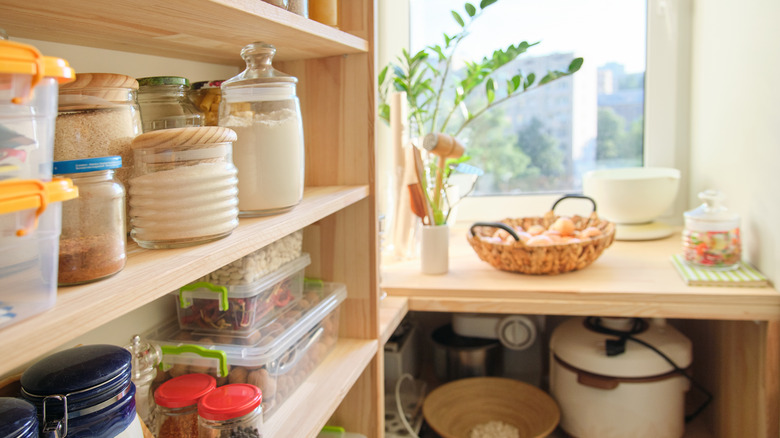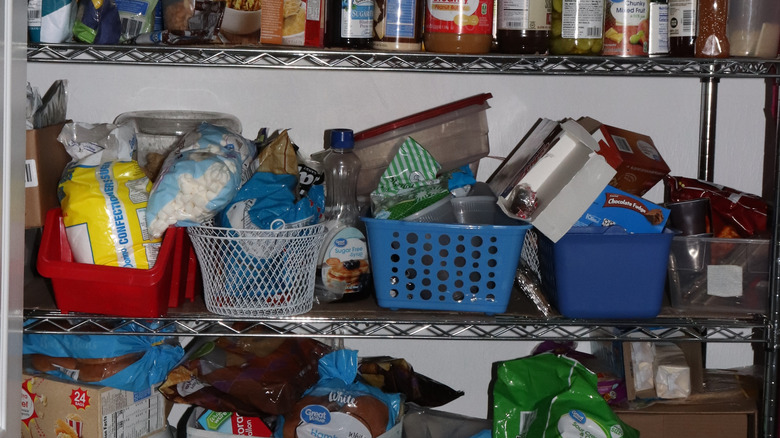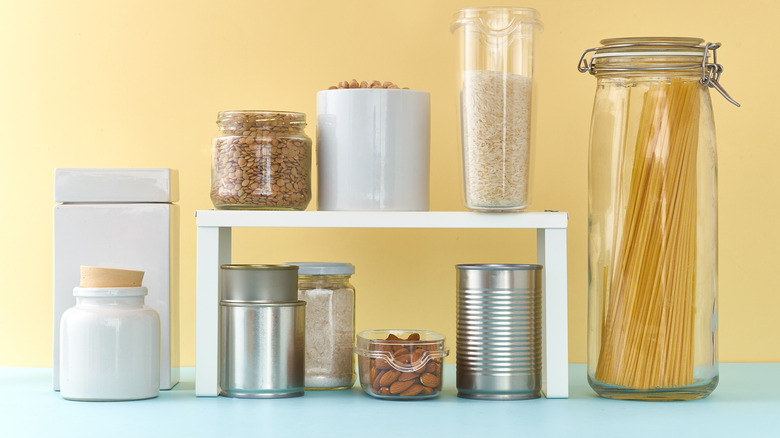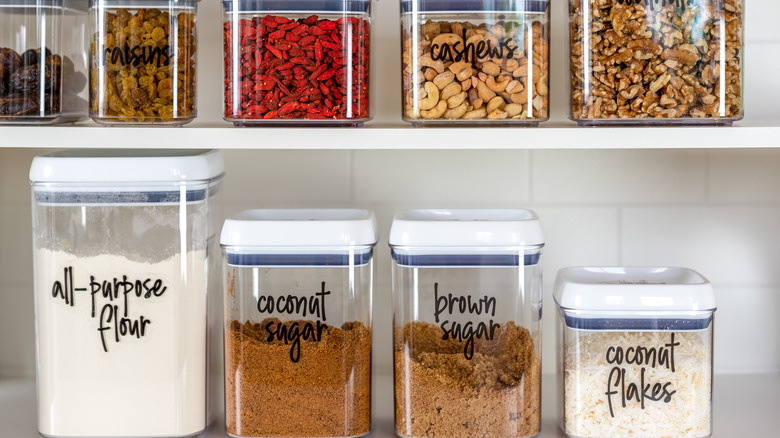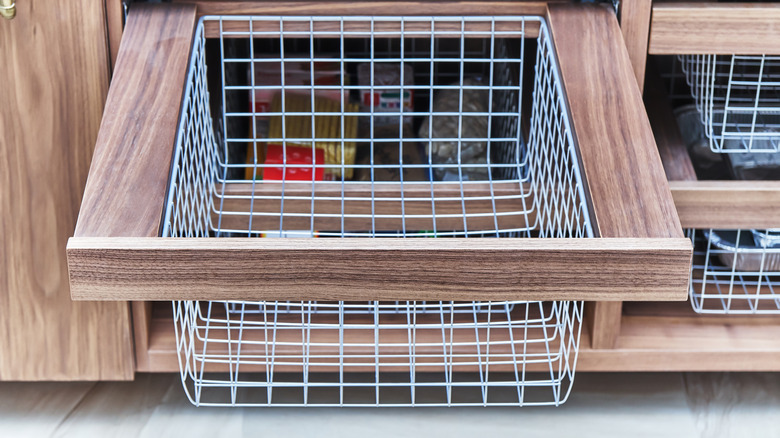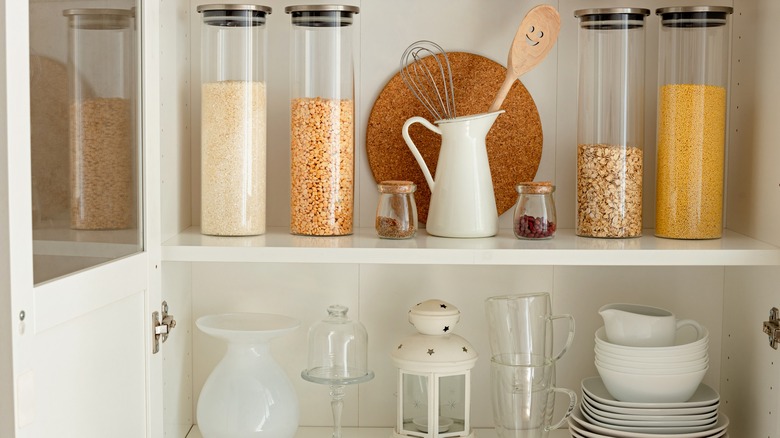5 Best Ways To Make Your Pantry Feel Bigger
If you excel at jigsaw puzzles, wooden block tower games, and making all the luggage for a family of six fit into the trunk of a rental sedan, then making the pantry in your home feel bigger is likely to be just this side of heaven for you.
For the rest of the world, we could use a few tips on how to make our pantries not only feel bigger but feel more organized and accessible while accommodating more of the many things we need. Everyone loves a bargain to beat inflation or take advantage of great sales, but that can leave our pantry bulging at the seams.
China, glassware, small appliances, mixing bowls, and more occupy most of the cabinet space in today's homes. Fortunately, many homes are also outfitted with a pantry, though the size can vary from walk-in roominess to only a bit more than a double-stacked cabinet. No matter the size, a few great tips can pack a premium punch in your perfect pantry.
21 Oak collected more than a dozen tips on improving the space usage in your pantry. Topping their list is to utilize every inch, including the real estate hovering just below your shelves, and the space on the pantry doors. It seems obvious, but they add that space can be maximized by not neglecting any part of it. Read on for tips on making your pantry feel bigger than you thought it could, with a few unexpected side benefits also.
1. Make your pantry feel bigger by purging first
Begin the expansion process by purging your pantry of everything you don't need or want. As you remove each item, check the expiration date. If the date is older than your cat, it has to go, no matter what your cousin twice removed says about oatmeal never going bad!
Removing pantry items also lets you take stock of what you have. Inevitably, you'll find items way in the back that you forgot you had. Yes, the tiny sample-size jars of huckleberry jam will bring back a happy memory of that fun county fair you decided to go to one summer, but it was years ago, and you never got around to opening them. Time to say goodbye.
If you plan to toss items, however, think about how to responsibly recycle them. The Sierra Club notes that emptying and cleaning cans/containers and composting the contents is the most eco-friendly option.
After taking the pantry denizens out, ask yourself if you really plan to ever open the box of chickpea pasta or can of fiesta corn. If you hesitate for longer than three seconds, do yourself a favor and set it aside to be donated to a food pantry. A hungry family will thank you for the healthy macaroni and flavorful veggies. Finally, before putting the items back on the shelf, give the ones you're keeping a quick swipe with a cloth to avoid putting dust back into your pantry.
2. Brighten up the pantry before filling it up
Now that you have emptied your pantry and purged it of anything you don't need or that has been collecting dust in the farthest corners, it's a great time to grab some bright glossy paint and add some lighting.
Before deciding on the paint shade, opt for a gloss or high gloss finish, rather than a matte or flat finish. Gloss paints are easier to clean and more light-reflective. The downside is that they highlight imperfections on your walls, but if you're only planning to paint the back and sides of the pantry, that shouldn't be a concern.
The color of pantry paint is a matter of personal preference, though light colors generally will make spaces feel bigger. If your kitchen is a soft, neutral shade, you may want a pop of color in the pantry. Or you may see the pantry as an extension of the kitchen and opt to paint it the same hue. The sky is the limit, as PPG Paints points out, and since the doors will likely be closed most of the time, the pantry could be your personal palette.
Don't forget to add lighting, which will make the pantry feel bigger, as well. Look for LED lights that are battery-operated, which will last a long time and won't throw off much heat. String lights can be mounted along the underside of a shelf, while motion-sensor lights can give immediate brightness.
3. Make your pantry bigger by embracing uniformity
You can see it, can't you? Every container is the same size and shape, and each is neatly marked with a custom label. They are standing in a row or stacked together. It's pantry heaven for people who thrive on organization. (You know the type; they're the ones who move the coffee mug just one inch to the right so that it aligns perfectly with the edge of the laptop while they're working.) That kind of uniformity might seem a little obsessive or a bit compulsive, but it instantly organizes the space and makes your pantry look bigger.
The use of clear jars is one way to add uniformity and open up your pantry space. Glass reflects any light in your pantry while also allowing you to see what is in the jar. The bonus is that you can see how much oatmeal or flour or crunchy sugar breakfast nuggets are in the jar without opening it up. Good Housekeeping recommends the glass jar method and notes that you can write on the jars with dry erase markers to add expiration dates or other details.
If investing in glass jars isn't in your budget, hit the local thrift or dollar store and seek out plastic storage containers. Be sure they have lids that fit well. A better option, however, is to go with ones that screw on rather than snap on. They have a better chance of not warping over time.
4. Use every inch to its greatest capacity
Your pantry might be as big as a sheet of lasagna or as minuscule as acini de pepe! No matter the size of your kitchen pantry, you can make the most of it by maximizing every square inch.
Begin by taking stock of the spaces that you have typically underutilized. For example, examine the doors of your pantry to see if there are ways to use the inside area. Barn doors and bifold doors don't offer many options, but if your pantry has a traditional door that opens out into the kitchen, you may be able to use the inside of it. Woodworker Access takes a practical approach to the issue by pointing out that homeowners need to ascertain whether their ideas for placing storage inside a pantry door will allow the door to fully close. Be sure there is enough clearance all around the storage you want to install.
Another capacity-building idea is to install Lazy Susans in the corners to make good use of those hard-to-reach places. If you aren't a fan of the spinning trays, look in specialty shops for corner shelves, particularly stackable ones that are adjustable.
Finally, make your pantry bigger by accessing the valuable real estate under the shelves. Grab a few baskets that levitate below the shelf for easy extra storage. They come in many styles; find one that fits your décor, then snap a selfie with your extra shelfie!
5. Putting the psychology of an organized pantry to work for you
Researchers and experts agree that an organized home generally elicits positive internal feelings. In simple terms, happy home, happy life. While that may sound like pop psychology, there is some truth to the adage that a clean and organized space reflects organization in other areas of a person's life.
WebMD explains that several studies have shown direct correlations between getting one's home (or parts of it) organized and happiness. Furthermore, they discovered that women whose homes were less cluttered had lower levels of stress hormones.
For some people, said an expert interviewed by the Cleveland Clinic, cleaning and organizing is a way to maintain control over one's environment. Channeling the need for control into an organized, tidy pantry that functions well and looks bigger is a pretty good side benefit, and hopefully, can lead to all positive outcomes!
Focus all that psychology into creating a pantry that looks bigger and functions better than you thought it could. Take some advice from Woman's Day: Use tiered shelving, especially for small items like spices or cans of tuna; find a dedicated spot for plastic bags; place a few hooks in strategic areas that would otherwise be unused spaces; and don't be afraid to repurpose items meant for other parts of the home, such as over-the-door clear plastic shoe holders, which are perfect for small, unruly items like sauce mixes.
